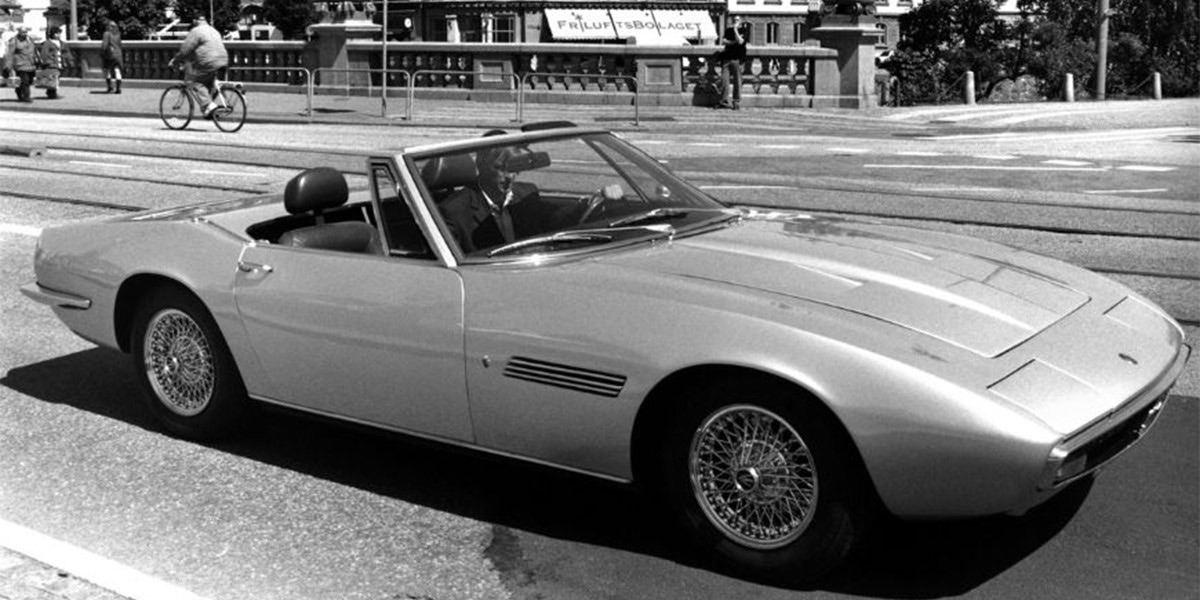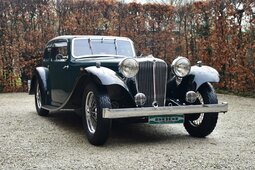The Ghibli, a 2+2 coupe style vehicle, was introduced by Maserati in 1967. Equipped with features like four-wheel disc brakes, independent suspension in the front, optional wheels made of magnesium, and a 4.7-liter 90° DOHC V8 engine, which was later upgraded to 4.9 liters in the SS model, it was a remarkable car. The starting price was USD 19,000. The name 'Ghibli' was inspired by an Egyptian desert wind, a common naming theme for Maseratis during that time. However, these specifications pale in comparison to the vehicle's design, which is far more fascinating to discuss.
Designed by the iconic Giorgetto Giugiaro at Ghia, the Ghibli marked Maserati's initial exploration into wedge-shaped designs, and it was a resounding success. The car's low, elongated body was slightly taller than the Ford GT40, stretching to 4.69 meters. Giugiaro regards the Ghibli as one of his most exceptional creations of that time. Upon closer examination, one can see that the Ghibli has more curves than contemporary models designed by Gandini. Its low, sloping hood emphasizes the wheel arches. This design was made possible through the use of a dry-sump lubrication system, which allowed for a lower engine placement. The Ghibli's side profile, in my opinion, is where its breathtaking silhouette is best appreciated. From the trident emblem at the front to the singular exhaust tip at the rear, every aspect of it is a masterpiece of automotive art. The artist behind this masterpiece was the local coachbuilder Vignale.
The Ghibli, despite its revolutionary exterior, is a testament to Maserati's heritage, blending their grand touring essence with racecar technology. The 4.7-liter aluminum block V8 shares its roots with the engine in the 450 S racecar. Its chassis is a modified version from the Quattroporte and Mexico models. This lineage grants the Ghibli greater comfort than other wedge-shaped supercars, making it ideal for extended continental travels. This suitability for long journeys is underscored by its dual 50-liter fuel tanks.
In comparison to its contemporaries from Ferrari and Lamborghini, the Ghibli is less complex and more temperate. While its rivals often employ high-revving V12 engines, the Ghibli's V8 is torque-rich and doesn't exceed 6000 RPM. This results in a more manageable and user-friendly vehicle, especially in everyday driving conditions. The car's practicality is further enhanced by the popularity of its automatic transmission option, especially in the U.S., as opposed to the 5-speed ZF manual gearbox.
However, the Ghibli is far from being sluggish. Equipped with four double Weber carburetors and a 330 BHP output in its 4.7-liter version, it can reach speeds up to 265 km/h. In 1969, Maserati introduced the 4.9-liter Ghibli SS, boasting slightly higher horsepower and a top speed of 285 km/h, positioning it as a formidable competitor in its era. The SS version, being rarer, is more coveted nowadays. Maserati produced 779 units of the standard Ghibli and 425 of the SS version.
For those desiring a convertible GT, the Ghibli Spyder was an option. Exclusively a two-seater and significantly rarer than the coupe, only 125 Spyders were made, with every fifth one being an SS model. Thanks to Giugiaro's design expertise, these cars avoided the appearance of awkwardly modified coupes. To me, they even carry a hint of American style, complementing the V8 engines well.
The Price of the Maserati Ghibli
For those drawn to Italian GTs from the late 1960s, the Ghibli stands out as an appealing choice. It not only provides comfort for lengthy trips and impressive performance, but it's also relatively more accessible in terms of pricing (a term used loosely in this context) compared to its counterparts like the Ferrari 365 or Lamborghini Islero. The cost of a Ghibli typically revolves around the EUR 300,000 mark. However, the most rewarding aspect of owning a Ghibli is arguably the sense of joy and pride one feels when glancing back at it after parking.
The Original Maserati Ghibli Proves Maserati Was Once Great
---
Unearth your ideal vehicle in our Car Categories. Alternatively, delve into our Classic Passion Shop to discover exciting products from our partners!










